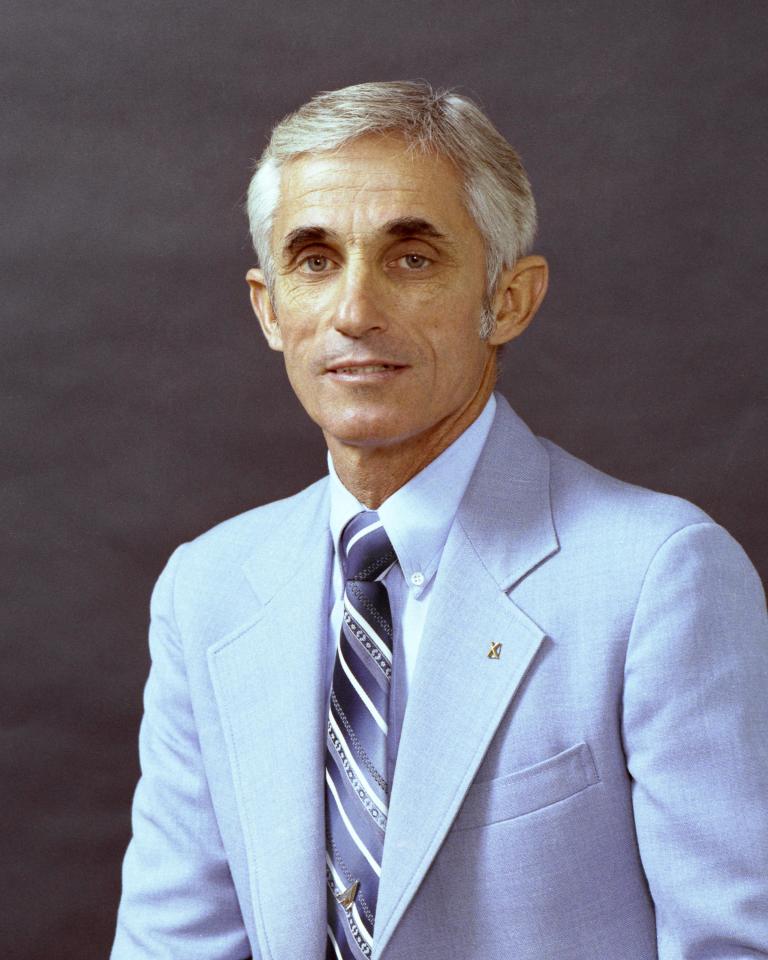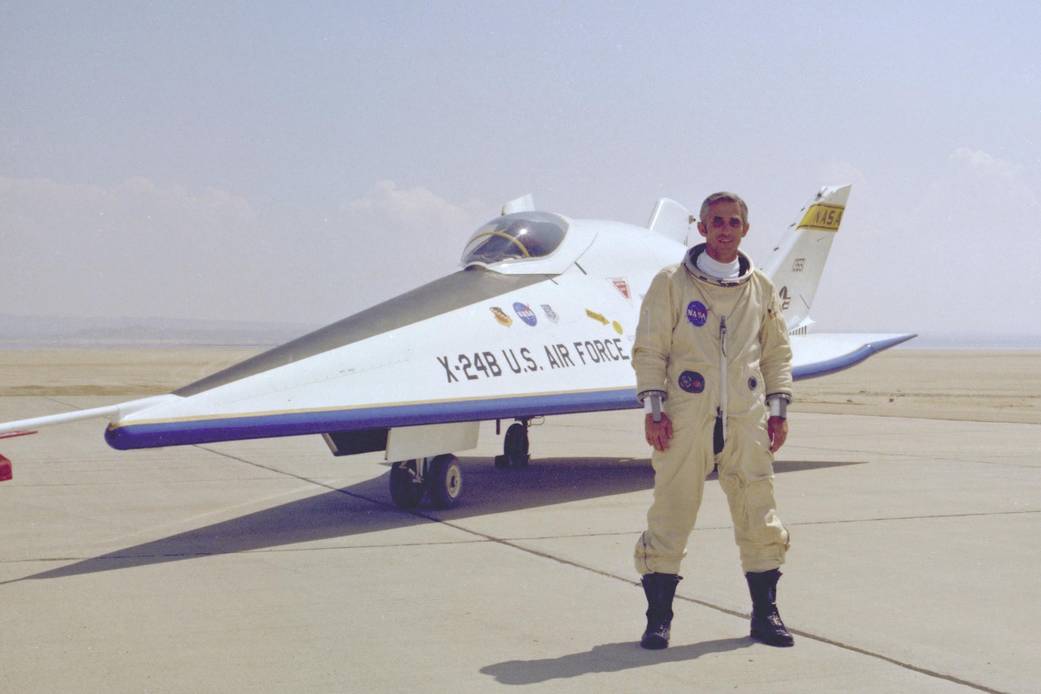
John A. Manke
Former Armstrong Center Director
John A. Manke served as a research pilot, chief of Flight Operations, and as site manager NASA’s Flight Research Center (now Armstrong Flight Research Center) in Edwards, California, during a 22-year career with NASA.
Manke came to NASA in May 1962 as a flight research engineer. He was later assigned to the pilots’ office and flew various support aircraft including the F-104, F5D, F-111, and C-47 before beginning research flights in the wingless lifting bodies in 1968. Manke flew 42 flights in the lifting bodies, including the X-24B, X-24A, HL-10, and the M2-F3, more than any other pilot.

The wingless lifting bodies demonstrated the ability to maneuver and safely land a vehicle with a shape that was designed for space flight. The research provided data and flight techniques used for the design of space shuttles. He made the first supersonic flight in a lifting body and the first landing of a lifting body on a hard-surface runway. That precision landing of the X-24B on Aug. 5, 1975, proved that a low lift-to-drag aircraft could be flown to a precise landing, leading space shuttle designers to eliminate plans to incorporate auxiliary jet engines on the shuttles to aid landing approaches.
Manke later served as chief of Flight Operations at NASA Dryden (now Armstrong), and upon Dryden’s integration with NASA’s Ames Research Center in October 1981, served both facilities in that role. As director of Flight Operations, he was responsible for the conduct of aeronautical flight research with some of the most advanced aircraft in the country at time.
He also served concurrently as Dryden’s facility manager from the time of its merger with Ames until his retirement from NASA in April 1984.
Manke attended the University of South Dakota before joining the U.S. Navy in 1951. He earned a bachelor’s degree in electrical engineering from Marquette University, Milwaukee, Wisconsin, in 1956. Following graduation, Manke served as a fighter pilot in the U.S. Marine Corps. After leaving the service in 1960, he worked for Honeywell Corp. as a test engineer for two years before joining NASA.
Manke was a member of the Society of Experimental Test Pilots and in his spare time, he built and flew his own light airplanes. Manke died Jan. 31, 2019, age 87.



























